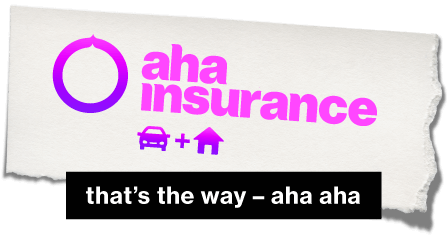A 1,000 deductible car insurance, otherwise simply having a deductible amount on your car insurance of $1,000, means that in the event of an accident where you are required to pay your deductible, you will need to pay $1,000 out-of-pocket towards the repairs, new car replacement, or other costs before your insurance company pays the remaining losses. Auto insurance deductibles directly correlate to how much you’ll pay for your policy. They represent your chosen level of risk and can be more or less depending on how much risk you want to assume.
The more risk that you choose to assume, the more you will end up saving on your car insurance. However, with this risk being assumed, you are essentially agreeing to cough up that $1,000 if something ever unexpectedly happens. A fender-bender totalling $3k damages, a head-on-collision, a slide into the ditch – if your car is older, your vehicle may only be worth a little more than your total deductible amount. It’s a careful science, trying to choose the right deductible for the ultimate savings. This article touches on some of the most common questions relating to deductible amounts and higher deductibles.
.
What is a 1,000 Deductible Car Insurance? – Frequently Asked Questions
How do deductibles work?
Whether your car insurance deductible is $250, $500, or $1,000, the way it functions is the same. Auto insurance’s deductible only kicks in should you ever encounter an accident wherein the covered loss is subject to your policy’s deductible. For example, if you got into a collision, your collision coverage’s deductible would come into play. So long as your claim is approved, the deductible will be applied upon when your insurance company issues its payout. With the majority of insurers, you won’t need to write a check or make a payment to your insurer. The amount will simply be subtracted from your payout.
Other times, insurers may have you make a payment to the autobody shop or garage before they step in to pay the remaining balance that is owed for the restoration or repair of your vehicle. It depends on the insurer for the most part, but every insurer is different.
Depending on the coverage that was applied, your deductible could very well be different. A collision and comprehensive deductible may be different. One could be $500, where the other could very well be $1,000. Either way, you’ll end up paying the deductible that the specific coverage is subject to. Be sure to familiarise yourself with your policy’s deductible.
Some instances do not require you to pay your deductible. For example, if you are involved in a small fender-bender and your car wasn’t damaged, but the other car was, or if other participants were injured, your liability coverage would pay out for their injuries or the property damage caused – but there would be no deductible.
There is also such thing as a “disappearing deductible,” which is a special program that some insurers offer which gradually lowers the deductible by a set amount for each claim-free policy period. After a specific number of policy periods, you may wind up with a $0 deductible for your comprehensive/collision insurance. If you file a claim, however, your deductible may reset to its original amount.
What is the average deductible for auto insurance?
Since a deductible is up to the policyholder’s choice, the average isn’t exactly gauged based off of a database of statistics the way that an average price might be. Usually, in Ontario, policyholders will have a $500 deductible. If a claim is filed, $500 is usually a decent amount that is less than the cost of repairs for most incidents.
In this instance, you would not file a claim for damages less than your deductible of $500. For example, getting into an accident where only your windshield was damaged might cost you around $400. Since this is under the average $500 deductible amount, and assuming that is your deductible, you’d be on the hook to pay the entire cost for yourself. You wouldn’t file a claim. But, if the same incident resulted in damages to your vehicle upwards of $2,000, you would need to pay $500 towards the repairs and your insurer would pay the remaining $1,500.
Even though the average deductible for auto insurance is $500, choose the amount that makes the most sense for you. You can work with a broker to determine the perfect amount, but it ultimately comes down to what you are willing to pay in the event of an accident and whether you want it to offset your premium costs. Note as well that a deductible may be changed at any point (save for when it comes to submitting a claim) simply by reviewing your coverage and making an alteration.
What if the damage is more than the deductible?
The only situation where your insurance company would cover you for damages is if the damages to your vehicle were more than your deductible amount. With the $1,000 deductible, you run the risk of encountering damages or incidents where your car is damaged for less than the total deductible amount. $500 is roughly the average because it results in decent savings and most incidents cost more than $500.
However, with the cost to repair cars gradually increasing as cars are becoming more and more expensive with higher tech-inclusions, luxury parts, and global weather conditions are causing more property damage, a $1,000 deductible might not be a bad idea.
While a minor car accident resulting in no physical injuries but slight damages can cost anywhere between $200 to $1,000, serious car accidents resulting in medical bills, property damage, and lost wages, costs can run upwards of $5,000. If the incident resulted in a death or disability, these costs can double or even triple up to over $1 million!
What happens if you don’t have money for deductible?
If you don’t have money for your collision deductible, you risk a more complicated claim process. This means there may be a delay in the repair of your car until you pay your deductible, but your medical payments should not be affected.
If you have a specific qualifying claim, such as a completely not at-fault accident, your deductible may be waived as an optional feature. But not all insurers offer this and not all claims are subject to this, meaning you should always have some kind of emergency funds saved up in case you do get into an accident where you must pay your deductible.
You also cannot negotiate your deductible in the event of a claim. Once you set your deductible amount, you can only change it before an accident occurs – not if an accident has occurred and you need to file a claim, but have realised your deductible amount is too high.
Is it better to have a low or high deductible?
That really depends. Both have their own pros and cons, and both could mean spending more than you’d like to, based on your current situation.
There’s no right answer. Raising your deductible to a higher limit, such as $1,000, means you’ll have lower insurance premiums than if you had a $250 or $500 deductible, but you’ll also have to pay that amount if you ever get into an accident. It’s pretty easy to say “but I’m a good driver! The odds of me getting into an accident are very low,” – and then choosing the higher amount, but the reality is that we never really know what situations we could encounter.
A lower deductible, on the other hand, means you will be paying more each month for your insurance. For some people, especially younger people who haven’t had the time to build up a proper driving history and insurance record, may struggle with their current rates. Raising their deductible can be beneficial for people like this, who are genuinely good drivers but whose demographics are causing the odds to be stacked against them.
Your best bet is to consult with a broker. A broker who knows you and your personal situation may be able to give you advice based on what’s best for your driving history, car model and make, and your current financial situation. It can seem like a bit of a Catch-22, but the solution more or less boils down to asking the advice of an expert and going from there. If your financial situation should ever change, remember that you can review and update your coverage. Just remember that you can’t do this upon needing to make a claim.
Does deductible mean I have to pay?
A deductible is the amount of money you will have to pay in an accident that is subject to its deductible amount. They are designed to cushion financial stresses caused by significant financial loss, or the accumulation of multiple small losses for an insurer. They also ensure that the policyholder still shares a portion of the risk and that there is an added deterrent for collisions, reckless driving, and other incidents. Of course, no one wants to get into an accident, but there are situations (like fraud) where staged collisions or accidents may occur in order to receive an unfair insurance payout. Deductibles can act as deterrents for such events, although they can’t prevent insurance fraud altogether.
Besides, deductibles have the potential to lower your premiums. Understanding the costs that come out of deductibles can help to manage your overall out-of-pocket expenses and can help encourage you to practise better driving behaviour, ultimately keeping yourself, your passengers, and others on the road much safer.
Are deductibles good or bad?
Both. Deductibles are essentially your percentage of the risk assumed. Insurance is all about risk transference, but virtually no policy allots 100% of the risk to your insurer. You pay for the risk transference via premiums, and those premiums can be directly impacted by lessening or greatening your insurer’s risk by means of altering your deductible amount.
A deductible means you have a direct opportunity to impact your insurance premiums, whether for better or for worse. Without deductibles, your insurance could cost you a lot more. They ensure the policyholder’s financial means and can help to keep insurance affordable for the general population. Plus, they hold you accountable.
The “bad” part about deductibles is that if you choose too high of a deductible – deductibles can be as high as $5,000 (depending on the insurer you’re with) – you could run into an issue where you are financially unable to pay your deductible, and therefore risk having your claim delayed.
Deductibles help insurers and policyholders to share the cost. Policies with low deductibles will cost more than policies with high deductibles, but policies with higher deductibles mean having to pay more out-of-pocket in the event of a loss. It pays to shop around and find the best policy and get advice from your broker on the most ideal deductible for your coverage.





